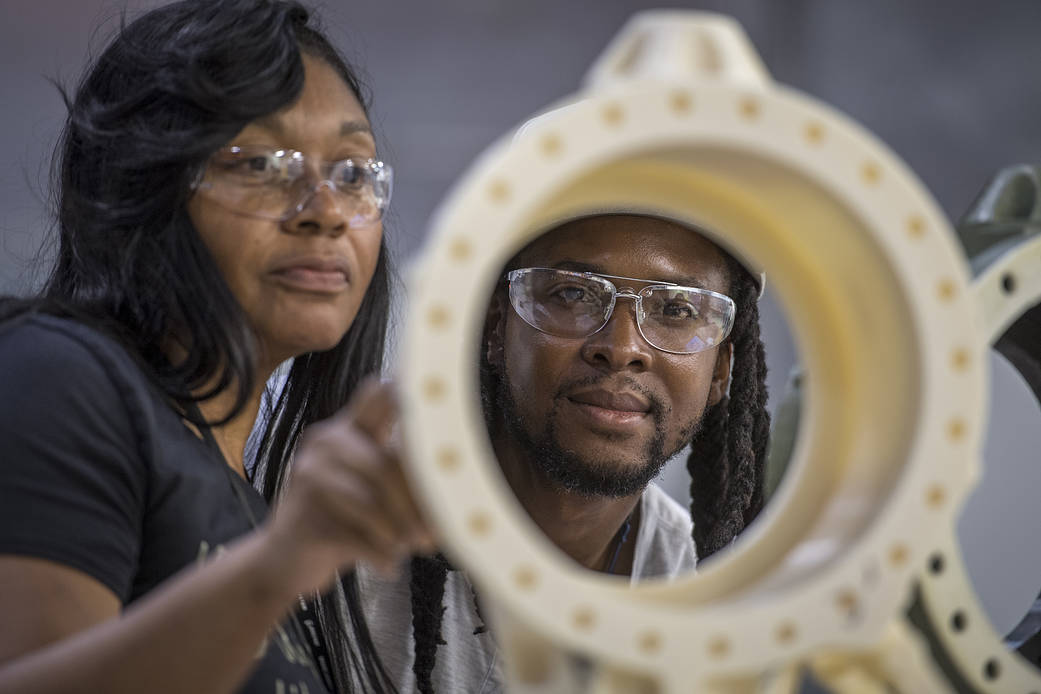America’s powerful new deep space rocket, NASA’s Space Launch System, will face harsh conditions and extreme temperatures in flight when launching NASA’s Orion spacecraft and potential cargo to lunar orbit, and for that, it’ll need strong protection.
Technicians and engineers have qualified 3D printing to aid in the application of the thermal protection system to the smaller, more intricate parts of the rocket. Spray-on foam or traditional insulation is applied to both large and small components of SLS; it protects the rocket from heat during launch and keeps the propellant within the large tanks cold. However, small hardware or cramped areas like the internal ducts of the engine section require technicians to either manually spray the foam on or apply a foam casting using, in some cases, a 3D printed mold. During the process, the foam, which is mixed and poured into the mold, expands to perfectly fit the part. This decreases overall processing time by reducing the need for complex and tedious post-process trimming. NASA and Boeing engineers performed extensive development and qualification pour foam testing early in the program. Using this data, the team developed a refined process that reduced the amount of time required to certify individual 3D printed molds and allowed the team to spend more time focusing on the critical requirements that must be met for each flight foam application. This streamlined the process, from 3D printing to pour application, and allowed for quicker processing times.
NASA is charged to get American astronauts to the Moon by 2024. Our backbone for deep space exploration is SLS and Orion, which will launch from NASA’s Kennedy Space Center in Florida to the Gateway in lunar orbit. From there, astronauts will ultimately use a proposed human lunar landing system for missions to the surface of the Moon.
Image Credit: Boeing


























